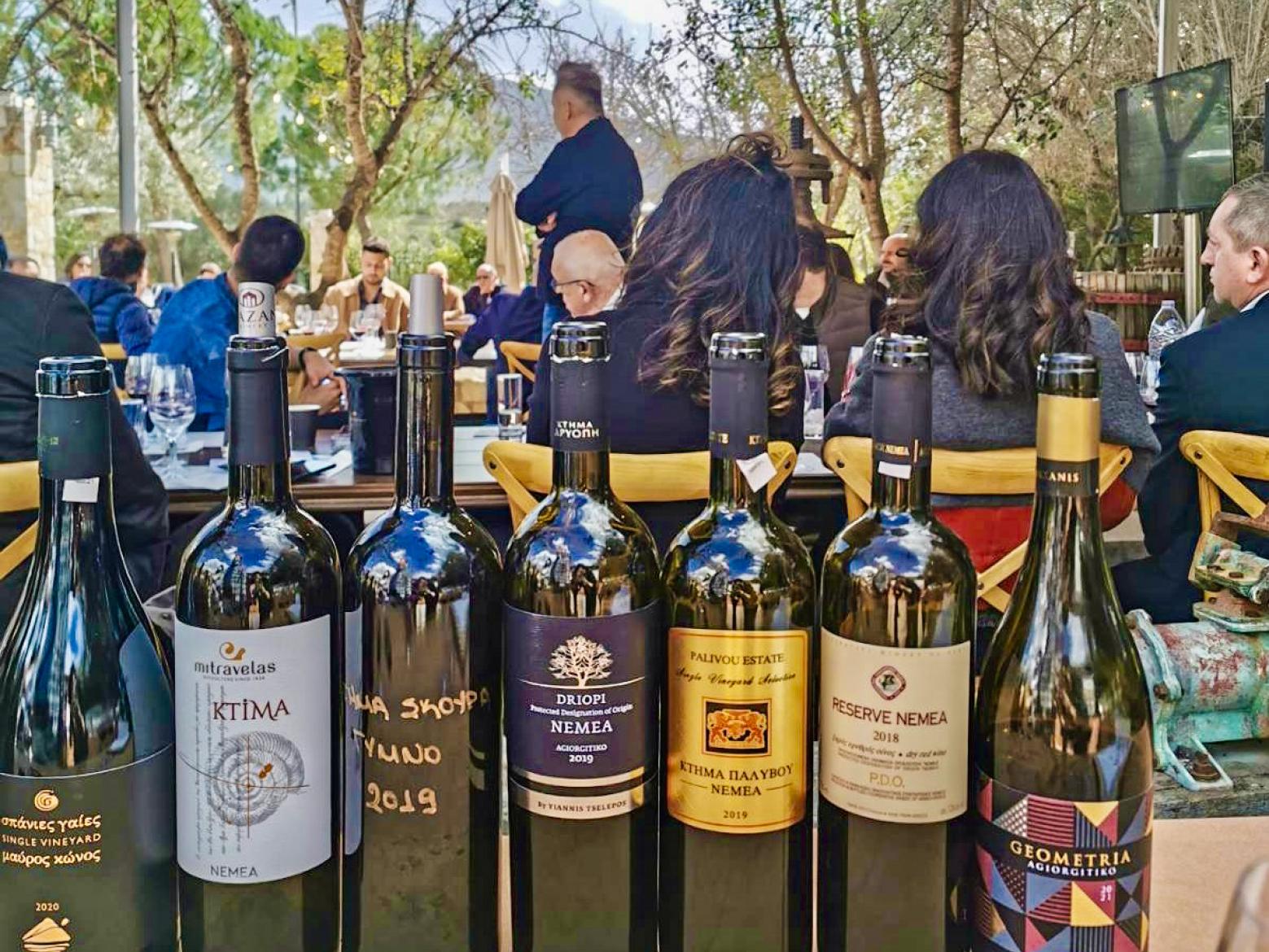Nemea and Terroir: Myth or Reality?
By Yiannis Karakasis MW
A few weeks ago, I found myself at the hospitable Lafazanis Winery in Nemea to present a workshop about the area and its wines, part of the 3rd Wine Tourism Congress (held by the Ministry of Tourism and the Prefecture of the Peloponnese in the presence of Dep. Minster of Tourism Mrs. Sofia Zacharaki). The topic I chose was “Nemea and its Terroirs”. When I had initially presented this topic in 2017, I was subjected to quite a bit of bullying, “Oh, come on, Yiannis, what on earth are you talking about? Is this some kind of joke?” You can read more on that tasting in my article Nemea Disclosed.
About five years later, the Winemaker Union of Nemea came forward proposing an update on the file of the area and a new classification based exactly on terroir and particular vineyards. Let me remind you that Nemea Lions PDO will be produced from specific vineyards with a minimum vine age of 10 years, maximum output of 56hl/ha, minimum abv 13% and minimum maturation period of 24 months.
So, the area is progressing and will continue to evolve, provided that the producers of the area collaborate and agree that this is the way to upgrade the image of their wines and their quality. I suspect this won’t be an easy task, but a few things worth achieving come about quickly or with little effort.
This conversation about terroir was what I wanted to take further in my presentation before the opening of the Congress, simply by tasting seven wines, 6 of which were from particular sub-regions of Nemea.
We started with Geometry 2021 by the Lafazanis Winery, produced from vineyards in Ancient Cleonae, a wine with a light touch and perfectly ripe fruit (recently awarded a place in 50 Great Greek Wines - The List). We continued with Nemea Reserve 2018 by the Nemea Cooperative, with its evident barrel ageing and lovely evolution, the definition of an archetypal barrel matured wine that inspired much discussion. The third and fourth wines, Nemea 2019 Palyvos Winery and Dryopi Nemea 2019 Tselepos Winery, produced from Ancient Nemea and Koutsi, respectively, clearly expressed the contrast between black fruit versus red fruit. Greater concentration versus finesse. Obviously, this is also partly due to each producer's style.
The second flight included another three excellent wines. An experimental bottling by Domaine Skouras from the sub-region of Gymno, impressively robust, the refined and almost silky Ktima Mitravelas 2019 from the sub-region of Achladia and the also very impressive Black Cone 2020 by the Strofilia Winery from the sub-region of Asprokambos, a wine that stole my heart from the very first moment I tasted it. All different expressions of a variety that is worth supporting because it presents a fantastic balance of all its elements, alcohol, fruit, tannins, acidity and colour.
Nemea is evolving, even if, at times, this amazes the producers of Nemea themselves. The differences and diversity of the area are inconceivable. To perceive this and avoid the usual clichés, one needs to be respectful, visit the area and walk around. This evolution is that we are beginning to see new, modern Agiorgitiko wines with more finesse, more balanced barrel expression, and less extraction. This does not mean that we are denigrating barrel use. Contrarily, I consider barrel use necessary in some styles of wine, but how it is used is of utmost importance. Even much use may be acceptable if the wine ‘wears’ this well. Never is something black or white, particularly in the wine sector. So, if these new ideas materialise, as I heard the younger generation of winemakers saying (Maria Maltezou, Vassilis Lafazanis, Aris Tselepos, Dimitris Skouras, Evangelia Palyvou), and they evolve even further, Nemea will profit and so will Agiorgitiko.




